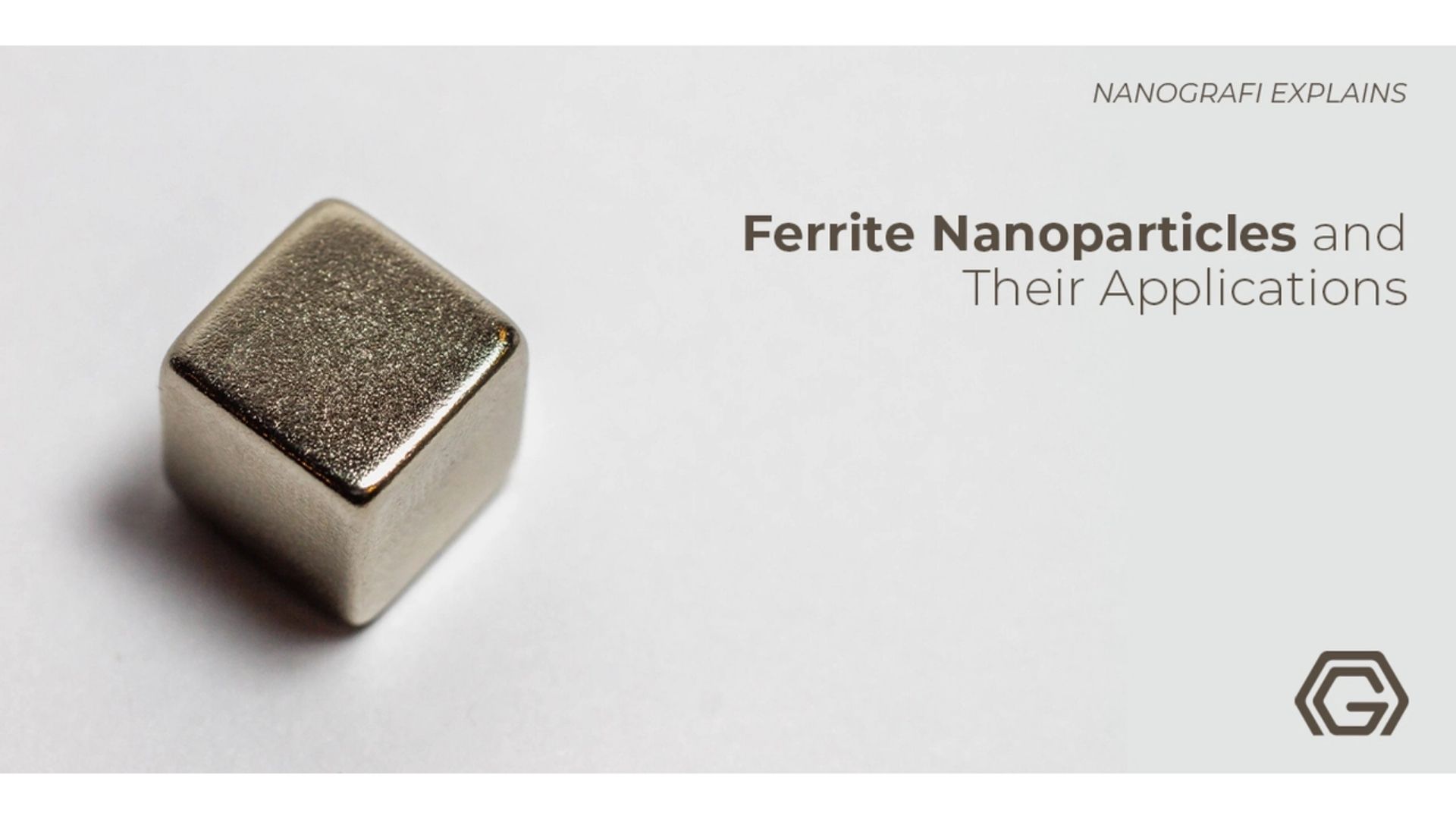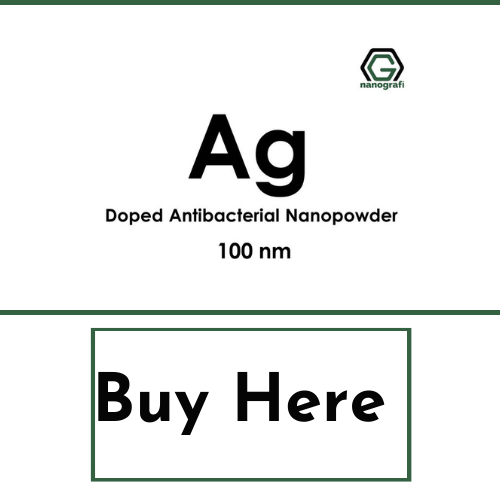7 Applications of Silver Element Nanoparticles in Different Sectors
The silver element nanoparticles are of great importance in terms of their applications.
Their future is very bright in different sectors, such as computing, biotechnology, sensors, communication, medical, energy, and smart materials. Their shape and size are crucial to targeting particular applications.
Introduction
Silver element nanoparticles have the potential to serve almost all sectors of life because they have the properties of both heterogeneous and homogeneous catalysts. At the moment, their wonderful applications have urged the researches to discover more of its uses. What makes them noticeable is there unique biological, physical, and chemical properties.
7 Applications of Silver Element Nanoparticles
Silver nanoparticles are being studied by material researchers as they aim to integrate it with some other materials to improve its properties, such as in solar cells, they are used as plasmonic light traps. These are the properties due to which Ag element nanoparticles are fruitful in other uses as well, for example, microelectronics, inks, imaging, medical, waste management, healthcare products, etc. Anti-fungicidal action of silver nanoparticles is useful in different sectors, such as food, medicine, cosmetics, plastics, soaps, textile, water treatment, etc.
Let’s have a look at the 7 applications of silver nanoparticles in different sectors.
1. Silver Nanoparticles in Food industry
The Silver nanoparticles are already being used for different purposes in the food sector, such as food packaging, functional food ingredients, and food supplements. The Silver element nanoparticles are also safe, reusable and easy to dispose of when protecting the food from gases, pathogens, moisture and dust with the help of nanocomposite LDPE films, having silver nanoparticles. A twin screw extruder was used to manufacture these films. The packaging material manufactured from this film is being used to store fruit juices and meat in order to prevent the deposition of undesired microorganisms, enhance the bioavailability of nutritional components, deliver desired texture to food products and encapsulate food components.
2. Silver Nanoparticles’ Medical Applications
In addition to imaging, treatment of cancer, AIDS, HIV, chemical and biological sensing, and drug carrier, the nanoparticles of silver element have a variety of antiviral, anti-bactericidal, antitumor, anti-inflammatory, antiangiogenic, and anti-oxidative properties. When the infrared laser light was directed by researchers on tumors through the skin of mice, the resonant energy absorption enhanced the temperature of the tissues of cancer. The temperature was increased from 37 °C to 45 °C. The infrared light killed the cells of cancer without affecting the surrounding cells. The symptoms of cancer were eliminated in just 10 days.
Moreover, the nanoparticles of silver are also emerging in the sector of orthopedics because of their wonderful antimicrobial properties. This is the reason that they can be used for bone concrete, tumor prosthesis, and hydroxyapatite coatings for avoiding the formation of biofilm, which is the main source of morbidity in Orthopedics related surgeries. Silver nanoparticles also reduce the threat of infection in an efficient and biocompatible way.
Silver nanoparticles are also very effective to treat wounds. The infections caused by wounds are considered as a challenge in the medical sector, having a great effect on the mortality and morbidity of patient. Surgical-site infection and wound dehiscence are important as well as challenging for in the current clinical practice. The skin of human beings is not only a complex element of the body but also exposed to external factors. Chemically or physically induced wounds might disturb the structure and functional integrity of the skin at various stages, causing forever disability or may also cause death, based on the seriousness of the injury. But, with Silver Element Nanoparticles, the wounds can heal very easily and quickly.
3. Silver Element Nanoparticles in Catalysis
The catalysis of chemical reactions is one of the major uses of silver nanoparticles due to unique selectivity, reactivity, stability, recyclability, and environmentally benign nature. The interest in nano silver mediated organic synthesis has increased in recent years. They catalyzed a lot of organic transformations, for example, alkylation, Michelle addition, cyclization, cross-coupling reaction, oxidation, A3 coupling reaction, Friedel-crafts reaction, and many more.
Researches are impressed by its use because it has allowed laws elective or unprecedented transformations to chemoselective and highly receptive catalysis in different nanosilver catalyzed reactions, such as the reduction of p-nitrophenol is impossible even in the existence of robust reducing agent, such as NaBH4, however with the use of silver nanoparticles in the same reaction, the transformation got possible to aminophenol. The production of pharmaceutical molecules and natural products can also benefit from the potential of Nanosilver catalysis.
If you are interested in the applications of ferrite nanoparticles,
you can read our blog post here.
4. Silver Nanoparticles in Treatment of Bioaerosols
Bioaerosols have a biological origin, for example, bacteria viruses. They have the capacity to cause allergies, infections and other diseases. They can accumulate on ventilating, HVAC systems and filters, which results in low-quality air. According to World Health Organization, half of the biological contamination that exist in indoor air actually originates from filter medium after filtration, which increases microbial growth. Mycotoxins are generated by bioaerosols which are injurious to the health of humans. To tackle this issue, silver deposited activated carbon filters have successfully been used to remove bioaerosols. The analysis of antibacterial action of silver coated ACF filters have been done for E. coli and Bacillus subtilis. This resulted that E. colli and Bacillus subtilis completely inhibited the physical properties of these filters, for example, filtration efficiency and pressure drop.
5. Silver Element Nanoparticles in Skincare Applications
Silver element products, such as beauty soap, body cleanser, hair shampoo and conditioner, toothbrush, facial mask sheets, sanitizer, makeup line, a skincare line, wet wipes, wash, and laundry detergent, disinfectant spray, etc, have greatly influenced our daily life. Silver nanoparticles can also be used to produce oral care gels and toothpaste. Silver nanoparticles with less than 15 nm in size indicated the greatest efficiency to avoid the bacterial growth that produces the bad smell and dental cavities.
The silver element can also be used for dyeing cosmetic foundations, powders, eye shadows, lipsticks, varnishes, eyebrow pencils, inks, etc. In contrast to conventionally used metallic pigments, silver nanoparticles are not injurious to human health, and may even have health advantages.
Moreover, researches have produced a soap having silver nanoparticles and the method was patented in the year 2013. Plant growth of trees, such as grains, Oleaceae trees, and citrus fruits can also be improved with silver nanoparticles. The fiber can also be protected due to its antimicrobial action. The nylon fibers coated with silver nanoparticles can be used to produce carpets having the good odor and free from pathogenic substances.
6. Silver Nanoparticles for Water Treatment
Numerous studies point out that silver nanoparticle can work as outstanding, antimicrobial, disinfectant, and antiviral agents. The results indicate that silver nanoparticles in groundwater, brackish water, and surface water are stable. Though, in seawater circumstances, AgNP inclines to aggregate. The comparison of AgNP-impregnated ceramic water filters and ceramic filters saturated with silver nitrate was made.
Researchers have found that the nanoparticles of silver are exceptional antimicrobial, antiviral and disinfectant agents. It has been found that they are stable in groundwater, surface water, and brackish water, but in seawater, silver nanoparticles tend to aggregate. The comparison of ceramic filters impregnated with silver nitrate and silver nanoparticles impregnated ceramic water filters was conducted, which found that silver nanoparticles impregnated ceramic filters are preferable because of the less quantity of silver in comparison to Silver Nitrate treated filters, without affecting the performance of filters and water chemistry. Moreover, quaternary ammonium functionalized silsesquioxanes-treated ceramic water filter desorbed less from the filters and achieved higher bacteria removal as compared to water filters impregnated with silver nanoparticles.
7. Silver Nanoparticles for Diabetic Foot
A team from the Autonomous University of Mexico (UNAM) has found a solution for diabetic feet with the help of Silver Nanoparticles. They managed to treat diabetic foot amputations in 97% of the hundred cases using silver nanoparticles as it is antiviral, antibacterial and antifungal and kills hundreds of pathogenic microorganisms by simple contact. The research reveals that nanoparticles applied in aerosol form behave like nanospheres that release controlled silver ions capable of stopping the microbial action and allowing the regeneration of damaged tissue.
Diabetic foot is one of the most traumatic consequences of diabetes and the most frequent cause of non-traumatic amputation of the lower extremities both in Europe and in the United States. It is a serious health problem that is increasing year by year and has great socioeconomic and health impact altering the quality of life of the patient. It is a problem that affects few people but the truth is that at least one in four diabetics will suffer an ulcer throughout their lives that will affect their quality of life, forcing many to be hospitalized for a long time. In fact, 85% of people who have had a foot amputated had an ulcer of this type before.
Regarding the factors that predispose to foot ulceration in diabetics are many; among them the inadequate control of long-standing diabetes but also smoking, hypertension, dyslipidemias -increased blood lipids- and the presence of chronic complications such as polyneuropathy or the patient's lack of autonomy. Many also present other vascular causes that predispose to ulcers to heal poorly, become infected and eventually lead to amputation. The picture is so complex that diabetics are treated by experts from very different specialties: surgeons, endocrinologists, orthopedic surgeons, experts in infectious diseases, nurses, rehabilitators, etc.
Using Silver Nanoparticles is a relatively simple way to avoid infection of a diabetic foot and even to disinfect an already infected ulcer. What's more, it allows avoiding amputation and regenerating damaged tissue, facilitating the healing of the wound because they are powerful germicide against viruses, bacteria, fungi (for example yeast) and other pathogenic parasites that also quickly alleviates inflammation, improves digestion, reduces toxins in the body, stimulates lymphatic drainage, improves cellular oxygenation, increases the flow of energy in the body, strengthens the immune system, helps eliminate tumor cells, stimulates the growth of bones, promotes the healing of wounds and burns and accelerates healing processes and helps regenerate tissues quickly and easily.
The thing that worries is that the knowledge that silver is an extraordinary disinfectant has been discovered since a century and despite this, in our hospitals, its use has always been ignored despite its antibacterial, antiviral and antifungal possibilities. Silver nanoparticles have found be a miracle for treating this serious disease.
Conclusion
Silver nanoparticles (AgNPs), as stated above, have very important applications in a variety of sectors, such as Food Industry, Medical, Water Treatment, Aerosols, Diabetic foot, Catalysis, etc. The reason for their use in multiple fields is their exceptional biological, physical, and chemical properties. Their non-toxic structure and high antimicrobial efficiency is also a great advantage. The researchers are still working on discovering more of its uses. The coming years will see many more fruitful applications of Silver Nanoparticles.
To get more information, you can visit Blografi.
Recent Posts
-
Nanocomposites in Food Packaging
The utilization of nanocomposites in food packaging represents a significant advancement in the fiel …19th Apr 2024 -
What is the Difference Between 7075 and 6061 Aluminum Alloy?
When comparing 7075 aluminum alloy to 6061 aluminum alloy, it's essential to understand their disti …5th Apr 2024 -
Iron-Air Batteries: The Ultimate Guide
Iron-air batteries represent a significant breakthrough in energy storage technology, offering a sus …29th Mar 2024







